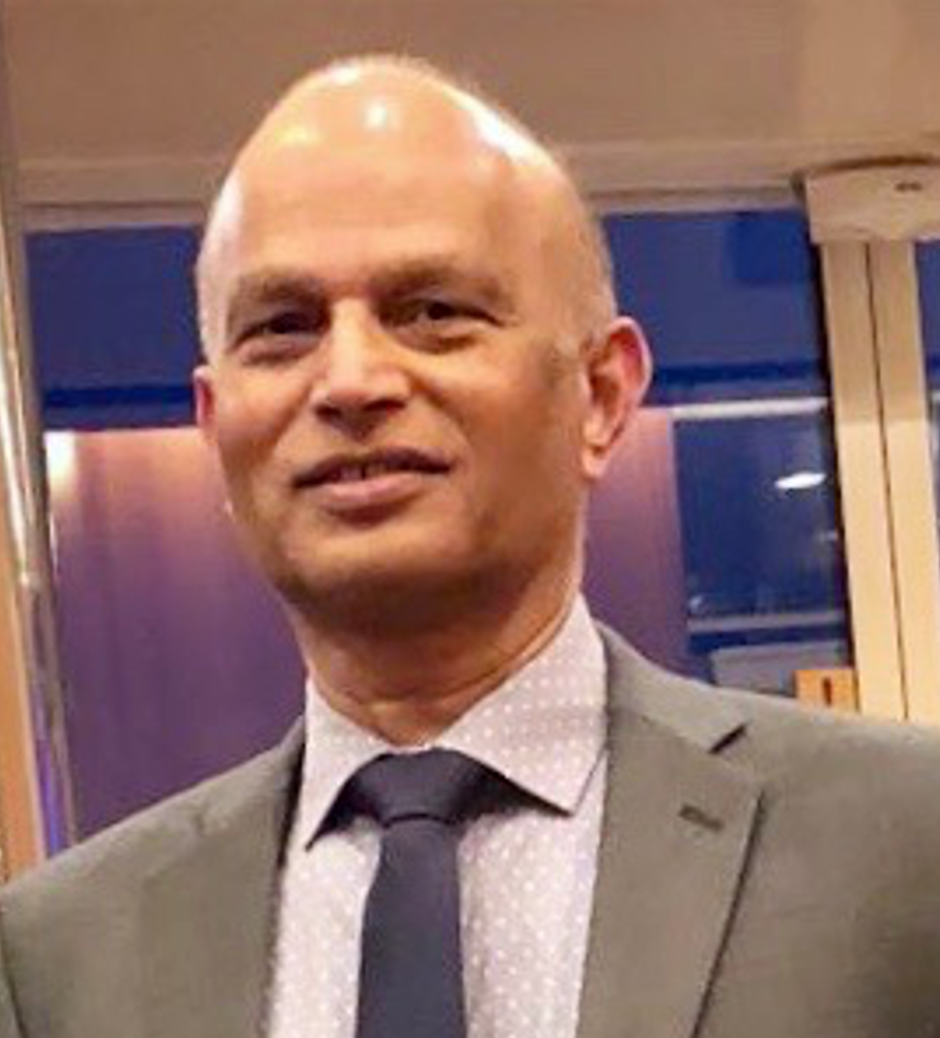Speaker Spotlight: Engineering Research Distinguished Speaker Series
New to The Faculty of Engineering and Applied Science, Engineering Research Distinguished Speaker Series aims to connect world research leaders in various areas to the Ontario Tech Community.
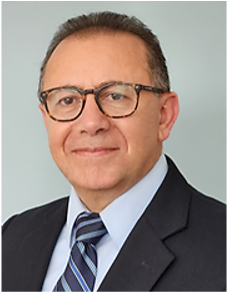
Engineering Research Distinguished Speaker Series
Optical Communication Networks Optimization
Featuring Dr. Wahab Almuhtadi, P.Eng, MSc, PhD in Electrical Engineering, Professor at Algonquin College/Carleton University
September 20, 2023, 12:00 PM, EST.
Abstract
In recent years, we have been observing fast social and economic development, rapidly changing industry, and continuously growing demand for bandwidth. This development raises new challenging optimization problems for the optical communication networks. These problems are often very complex not only due to the optical network configurations, but also due to their enormous traffic and operation al complexity. The whole networking industry is being disrupted and bandwidth availability is worsening by the rapid deployment and continuing adoption of 5G and IoT, the use of which involves tens of billions of end-users (humans-to-machines, and machine-to-machines), interconnecting with each other and driving increased consumer and business interactions. There is an upsurge in communication networks demand, driven by millions of end-to-end user devices, and recently by premium/basic/utility ultra-mobile users who want the ability to access services like the cloud network to consume high-definition contents, videos, and applications when and where they so choose. Today’s networks were evidently not designed to accommodate or adjust to these unanticipated growing and unpredictable demands.
To address these challenges, networks must be adaptive to enable service providers and operators to optimize their existing communication network infrastructures while incorporating new technologies and ways of working. Several studies and trials around the open software, platforms, and systems, the use of open APIs, AI, multi-vendor management, streaming network telemetry for a real-time data collection, analytics, and service automation have been critical in helping service providers and operators understand what is needed to evolve and optimize networks. There is a need for an effective optimization solution method to improve the OAM&P of the optical communication networks. During this talk, the speaker will conduct a live and real-time connection to the Ciena Optophotonics Lab at Algonquin College (Ottawa Canada) to demonstrate how these optical communication networks work and how they can be adaptive and optimized.
Biography
Prof. Almuhtadi has over 32 years of industry experience, and in parallel, over 26 years of university teaching experience. He’s Professor/Coordinator of “Optical Systems and Sensors” Program, Algonquin College/Carleton University, Canada. He’s Research Council Member, Digital Research Alliance of Canada Previously. Prior to that he was Senior System Engineer at Nortel, Optical Solutions R&D. With his professional background, he demonstrated outstanding leadership in establishing Applied Research with $10.5M fund that fostered Algonquin College to become a Polytechnic Institution. He’s the founder of the $6M cutting-edge Optophotonics Lab/Optical Communications Network 200 Gbps, the only lab of its kind in any educational institute. He’s one of the founders of $65M “Centre of Excellence in Next Generation Networks-CENGN”. He published several technical papers and books. He received several awards from IEEE, academia, and industry, e.g., 2010 IEEE Leadership Award, 2015 IEEE Canada W.R. Service Award, 2009 Laurent Isabelle Teaching Excellence, 2006-NISOD Award, and 2015-Canadian Pacific Railway Engineering Medal, Engineering Institute of Canada-EIC. He’s P.Eng. and EIC Fellow. Dr. Almuhtadi earned his M.Sc. and Ph.D. in Electrical Engineering from Brno University of Technology, Czech Republic in 1986 and 1990 respectively.
Dr. Almuhtadi is actively involved in IEEE over 29 years serving in many executive level posts across IEEE (IEEE TAB/MGA, Society Region, Section, Chapter, Committee, Student Branch). Just to name a few, He is a Distinguished Lecturer in IEEE Communications Society (ComSoc), he served as Member of ComSoc Board of Governors and Director of ComSoc North American Board (2019-2020), as well as served and still serving in many ComSoc Committees.
Dr. Almuhtadi served also as the President and the Chair of Board of Governors of IEEE Consumer Technology Society - CTSoc (2019-2022). He was a very dedicated Member in the IEEE Technical Activities Board-TAB (2019-2022). He served as: Vice President of Education of IEEE CTSoc (2017-2018); Chair of IEEE Canada Publications & Communications Group (2017-2019). He is serving as Director, IEEE Canadian Foundation (2011-present), Chair of IEEE ComSoc/CTSoc/BTS Ottawa Joint Chapter (2008-present); Vice-Chair of Ottawa Section Senate (2009-present); Chair of Ottawa Section Award Committee (2005-present). Dr. Almuhtadi has organized and chaired 35+ national and international engineering conferences and symposia (e.g. Executive Conference Chair of IEEE ICC 2012 and ICC 2021; and currently IEEE ICC 2025 Montreal). Dr. Almuhtadi is currently running for IEEE Canada President/IEEE Region 7 Director (2026-2027).
Previous Speakers
-
Dr. Aydogan Ozcan
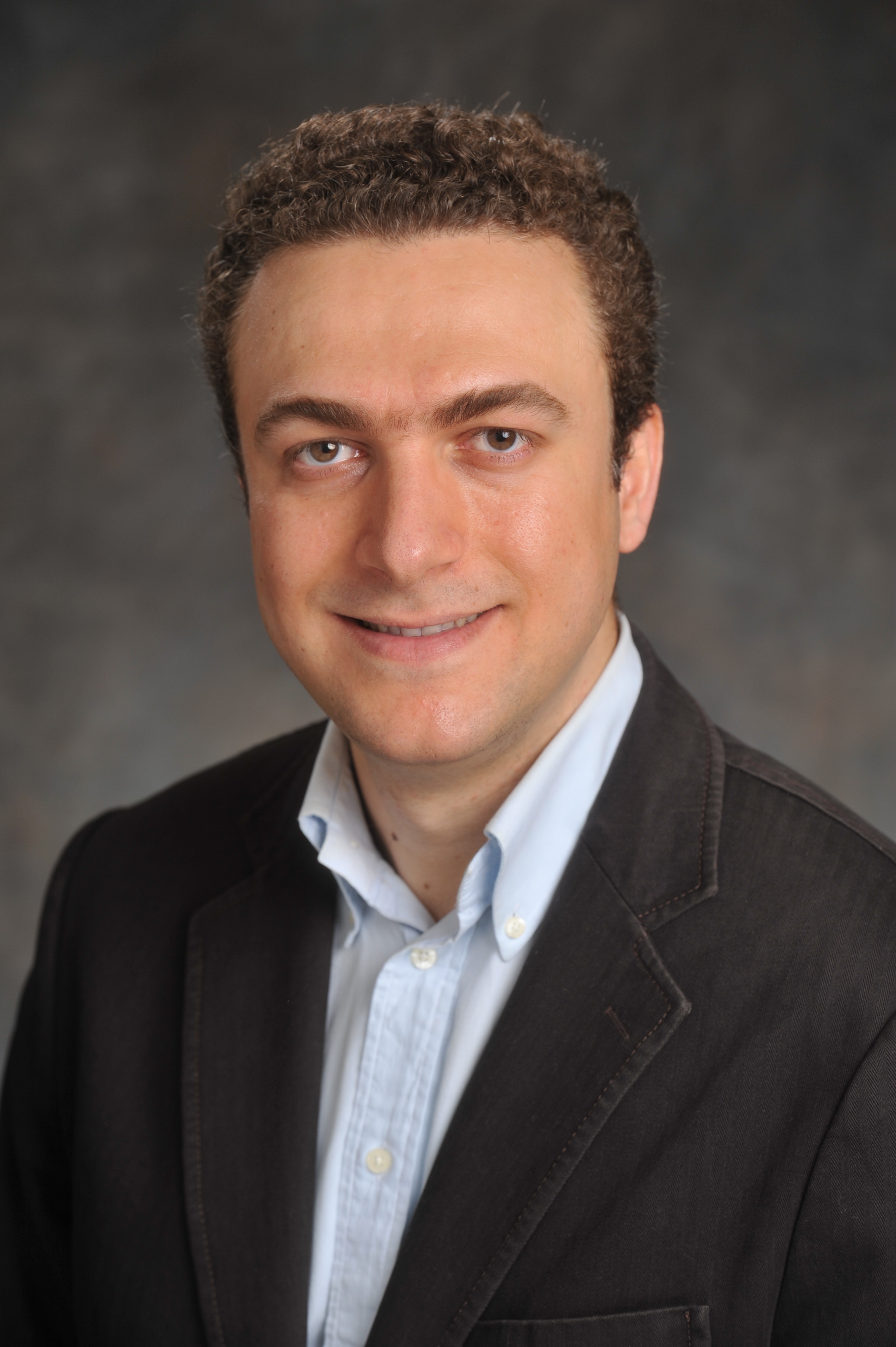
Engineering Research Distinguished Speaker Series
Toward a Thinking Microscope: Deep Learning-enabled Computational Microscopy and Sensing
Featuring Dr. Aydogan Ozcan
Chancellor's Professor at UCLA
Volgenau Chair for Engineering Innovation
Electrical & Computer Engineering, Bioengineering
HHMI Professor, Howard Hughes Medical Institute
Associate Director, California NanoSystems Institute (CNSI)
Fellow, National Academy of Inventors
Fellow, Guggenheim Foundation
Fellow, AAAS, SPIE, OSA, IEEE, AIMBE, RSC, APSMarch 15th, 2022, 12:00 PM, EST.
Abstract
Deep learning is a class of machine learning techniques that uses multi-layered artificial neural networks for automated analysis of signals or data. The name comes from the general structure of deep neural networks, which consist of several layers of artificial neurons, each performing a nonlinear operation, stacked over each other. Beyond its main stream applications such as the recognition and labeling of specific features in images, deep learning holds numerous opportunities for revolutionizing image formation, reconstruction and sensing fields. In fact, deep learning is quite powerful and has been surprising optics researchers in what it can achieve for advancing optical microscopy, and introducing new image reconstruction and transformation methods. From physics-inspired optical designs and devices, we are moving toward data-driven designs that will holistically change both the optical hardware and software of next generation microscopy and sensing systems, blending the two in new ways. Today, we sample an image and then act on it using a computer. Powered by deep learning, next generation optical microscopes and sensors will understand a scene or an object and accordingly decide on how and what to sample based on a given task – this will require a perfect marriage of deep learning with new optical microscopy hardware that is designed based on data. For such a thinking microscope, unsupervised learning would be the key to scale up its impact on various areas of science and engineering, where access to labeled image data might not be immediately available or very costly, difficult to acquire. In this presentation, I will provide an overview of some of our recent work on the use of deep neural networks in advancing computational microscopy and sensing systems, also covering their biomedical applications.
Biography
Dr. Aydogan Ozcan is the Chancellor’s Professor and the Volgenau Chair for Engineering Innovation at UCLA and an HHMI Professor with the Howard Hughes Medical Institute, leading the Bio- and Nano-Photonics Laboratory at UCLA School of Engineering and is also the Associate Director of the California NanoSystems Institute. Dr. Ozcan is elected Fellow of the National Academy of Inventors (NAI) and holds >50 issued/granted patents and is also the author of one book and the co-author of >800 peer-reviewed publications in major scientific journals and conferences. Dr. Ozcan is the founder and a member of the Board of Directors of Lucendi Inc., Hana Diagnostics, Pictor Labs, as well as Holomic/Cellmic LLC, which was named a Technology Pioneer by The World Economic Forum in 2015. Dr. Ozcan is also a Fellow of the American Association for the Advancement of Science (AAAS), the International Photonics Society (SPIE), the Optical Society of America (OSA), the American Institute for Medical and Biological Engineering (AIMBE), the Institute of Electrical and Electronics Engineers (IEEE), the Royal Society of Chemistry (RSC), the American Physical Society (APS) and the Guggenheim Foundation, and has received major awards including the Presidential Early Career Award for Scientists and Engineers, International Commission for Optics (ICO) Prize, Joseph Fraunhofer Award & Robert M. Burley Prize (Optica), Biophotonics Technology Innovator Award (SPIE), Rahmi M. Koc Science Medal, International Photonics Society Early Career Achievement Award (SPIE), Army Young Investigator Award, NSF CAREER Award, NIH Director’s New Innovator Award, Navy Young Investigator Award, IEEE Photonics Society Young Investigator Award and Distinguished Lecturer Award, National Geographic Emerging Explorer Award, National Academy of Engineering The Grainger Foundation Frontiers of Engineering Award and MIT’s TR35 Award for his seminal contributions to computational imaging, sensing and diagnostics. Dr. Ozcan is also listed as a Highly Cited Researcher by Web of Science, Clarivate.
-
Dr. Yun Hang Hu
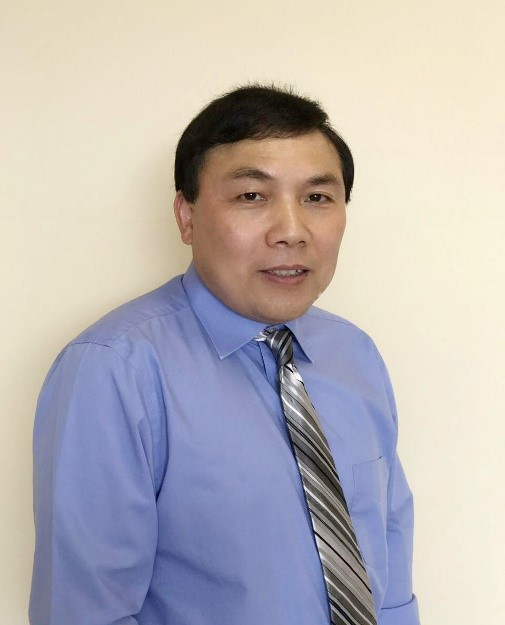
Engineering Research Distinguished Speaker Series
3D Graphene for Solar Energy
Featuring Dr. Yun Hang Hu, Charles and Carrroll Mcarthur Endowed Professor, Michigan Technological University
February 15th, 2022, 12:00 PM, EST.
Abstract
Because of the bonding flexibility of carbon, carbon-based materials exhibit various structures with a large variety of physical and chemical properties. Three-dimensional carbon allotropes (graphite and diamond) have been known from the earliest history. The zero-dimensional carbon fullerenes and one-dimensional carbon nanotubes were discovered within the last 35 years. Furthermore, isolated two-dimensional graphene, which is a one-atom thick carbon layer with hexagonal ‘‘honeycomb” lattice, was experimentally obtained 18 years ago. Actually, the discovery of those nano-structured carbon materials is one of the most important developments in science and engineering. The critical issues of fossil fuels are their limited natural sources and contribution to the increase of atmospheric greenhouse gases. To solve those problems, solar energy is considered as a promising future energy and the conversion of CO2 into valuable materials is believed as an effective approach to control the emission of greenhouse gases. In this seminar talk, Prof. Hu is going to discuss his research on 3D graphene and its applications for solar cells, including (1) the design and synthesis of 3D graphene from CO and CO2 and (2) the excellent performance of 3D graphene electrodes for dye-sensitized solar cells (DSSCs) and the perovskite solar cells (PSCs).
Biography
Dr. Yun Hang Hu is the inaugural Charles and Carroll McArthur Endowed Chair Professor at Michigan Technological University. He is a fellow of American Association for the Advancement of Science (AAAS), a fellow of American Physical Society (APS), a fellow of American Chemical Society (ACS), a fellow of American Institute of Chemical Engineers (AIChE), a fellow of ASM international (ASM), and a fellow of Royal Society of Chemistry (RSC). He was elected as the chair of the Energy and Fuels Division of the American Chemical Society (ACS) in 2014 and the president of the Hydrogen Storage Division of International Association of Hydrogen Energy (IAHE) in 2015. He is the Editor-in-Chief of Energy Science & Engineering, an editor for four ACS series books, and an editorial board member for 8 international journals. He gave more than 160 invited talks (including 45 plenary/keynote talks) to international conferences, universities, and research centers. He received his Ph. D. in physical chemistry from Xiamen University in China. His main research interests range from nanomaterials, clean fuels, energy devices, hydrogen storage materials, CO2 conversion, catalysis, quantum chemistry calculations to solar energy. He has published about 300 papers in prestigious journals.
-
Dr. Ramesh Sadhankar
A special edition from the Ontario Tech University IAEA Collaborating Centre
Opportunities and Challenges for Deployment of Advanced Reactors
Featuring Dr. Ramesh Sadhankar, Senior Advisor, Natural Resources Canada
December 7th, 2021, 9:15 AM, EST.
Abstract
Recent years have seen an increasing interest in the development of advanced small reactors by the private sector. Several public and industry initiatives have identified opportunities for advanced reactors for decarbonization of the industry, beyond the electric power sector. However, realization of such opportunities are contingent upon several factors including the timely demonstrations and licensing of new technologies, supportive policy framework and economic competitiveness. Integration of nuclear power generation with other forms of renewable energy sources may be necessary for a robust power supply systems. Innovative approaches for successful deployment of advanced reactors including renewable-nuclear hybrid energy systems, cogeneration of alternative products and large-scale energy storage may be required for successful deployment of advanced reactors. The challenges for deployment of advanced nuclear reactors in future energy market with increasing share of variable renewable sources have to be carefully analyzed and understood by the decision makers. Economic considerations for new nuclear projects and the requirements for flexible operation will be discussed. Policies, conducive to the deployment of advanced reactors, will be also be discussed.
Biography
Ramesh Sadhankar retired from the Canadian Nuclear Laboratories (CNL) as the Director of R&D Operations in 2020. He joined Atomic Energy of Canada Limited (AECL) at Chalk River in 1995 after working over 14 years in chemical and petrochemical industries. His previous responsibilities included as a Manager of Hydrogen Isotopes Technology program at CNL and as a Program Director of the Generation IV National Program at Natural Resources Canada in Ottawa. He represented Canada on the Generation IV International Forum and various fora of the Nuclear Energy Agency and the International Atomic Energy Agency. In the Generation IV International Forum, Ramesh was the member of the Experts Group and chaired the Economic Modelling Working Group. He also chaired two expert groups of the Nuclear Energy Agency, namely the ad hoc experts’ group on Advanced Reactors for the Future Energy Markets and the ad hoc experts’ group on the Role and Economics of Nuclear Cogeneration in the Low Carbon Energy Future. He participated and made presentations at several meetings of IAEA’s department of nuclear energy. He currently serves as a Senior Advisor to the Nuclear Energy Division of the Natural Resources Canada. He has a PhD in Chemical Engineering from the University of Alberta and is registered with the Professional Engineers Ontario.
-
Professor Seeram Ramakrishna
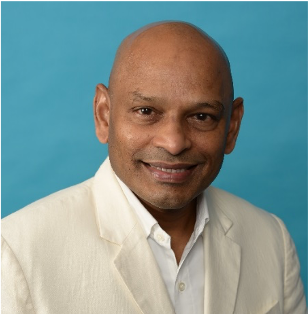 Build Back Better Materials World to Deal with the Existential Threats to Humanity – Reimagine Materials
Build Back Better Materials World to Deal with the Existential Threats to Humanity – Reimagine Materialsan innovative and groundbreaking approach in redesigning and reimagining the materials, as materials become central to humanity’s sustainability efforts.
Featuring Professor Seeram Ramakrishna, FREng, Everest Chair
September 21st, 2021, 12:00 PM.
Abstract:
Inspired by the concern for humanity, authors of the 1972 book The Limits to Growth professed problems affecting the habitability of planet Earth for today’s as well as future generations. Since then they were further refined and articulated. More recently, in the form of United Nations seventeen Sustainability Development Goals, SDGs. Sustainability is about the reduction of greenhouse gas emissions as well as circular solid waste management to reduce environmental pollution and waste accumulation in nature, to protect human health, to alleviate resources depletion and environmental deterioration, to regenerate biodiversity, and to overcome rising sea levels and extreme weathers caused by climate change for the well being of humans and preserving Earth for the future generations. The climate change articulation gained the attention of many people. And yet only a small fraction of humanity, as well as capital investors, are prepared to act on the sustainability solutions. Thus, sustainability articulations in the name of carbon-neutral economy, low-carbon economy, circular economy, and science-based sustainability targets with the promise of quality living conditions, jobs, and economic growth, are advocated by the governments and captains of industry. There are many facets and dimensions to myriad articulations. Materials are central to humanity’s sustainability efforts. According to recent papers published in the Nature journals, about 23% of global emissions can be attributed to materials production, and the global human-made mass now exceeds all living biomass of Earth. It is implicit to reimagine materials or build back better materials world so as to mitigate the existential threats to humanity, i.e. environmental degradation and biodiversity loss.
About Professor Seeram Ramakrishna:
Professor Seeram Ramakrishna, FREng, Everest Chair is among the top five impactful authors at the National University of Singapore (NUS) as well as in Singapore. NUS ranked among the top five best global universities for engineering in the world). He is among the top 500 highly cited researchers in the world. He is the Director of Center for Nanotechnology & Sustainability; and Circular Economy Taskforce Chair and He is a member of the Extended Producer Responsibility Advisory Committee of the Ministry of Sustainability and the Environment (MSE) and the National Environment Agency (NEA), Singapore. He is a member of the Environmental, Social and Governance (ESG) Committee of the Singapore Institute of Directors. He is a member of Enterprise Singapore’s and ISO’s Committees on ISO59020/TC323 Circular Economy and WG3 on Circularity. He is also the Chair of Sustainable Manufacturing TC at the Institution of Engineers Singapore (IES); and a member of the standards committee of the Singapore Manufacturing Federation. He is a member of the Technical Committee for Circularity of Materials, Singapore Chemical Industry Council Limited (SCIC) Standards Development Organization (SDO) Enterprise Singapore (ESG). He co-authored a book ‘Sustainability for Beginners”. His book on Circular Economy received 2021 Springer Nature: China New Development Award. European Commission Director-General for Environment, Excellency Daniel Calleja Crespo said, “Professor Seeram Ramakrishna should be praised for his personal engagement leading the reflections on how to develop a more sustainable future for all”. He is a member of UNESCO’s Global Independent Expert Group on Universities and the 2030 Agenda. He is honoured with the Excellent Presentation Award by the ICWMT (International Conference on Waste Management and Technology) 2021 initiated by Basel Convention Regional Centre for Asia and the Pacific and UNEP. He is the Editor-in-Chief of the Springer NATURE Journal Materials Circular Economy - Sustainability. He is an Associate Editor of eScience journal. He is an opinion contributor to the Springer Nature Sustainability Community. He teaches ME6501 Materials and Sustainability course. He also mentors Integrated Sustainable Design ISD5102 project students. Microsoft Academic ranked him among the top 50 authors out of three million materials researchers worldwide based on Saliency, publications, citations, and H-index. He is named among the World’s Most Influential Minds (Thomson Reuters), and World’s Highly Cited Researchers (Clarivate Analytics). He is an Impact Speaker at the University of Toronto, Canada Low Carbon Renewable Materials Center. He is a judge for the Mohammed Bin Rashid Initiative for Global Prosperity. He is a Vice-President of the Asian Polymer Association. He is a Founding Member of the Plastics Recycling Association of Singapore, PRAS, and Chairman of the Plastics Recycling Center of Excellence, PRCOE. His senior academic leadership roles include University Vice-President (Research Strategy); Dean of Faculty of Engineering; Director of NUS Enterprise; and Founding Chairman of Solar Energy Institute of Singapore. He is an elected Fellow of the UK Royal Academy of Engineering (FREng); AAET; Singapore Academy of Engineering; and Indian National Academy of Engineering. He received Ph.D. from the University of Cambridge, UK; & the GMP from Harvard University, USA.
-
Professor Onur Mutlu
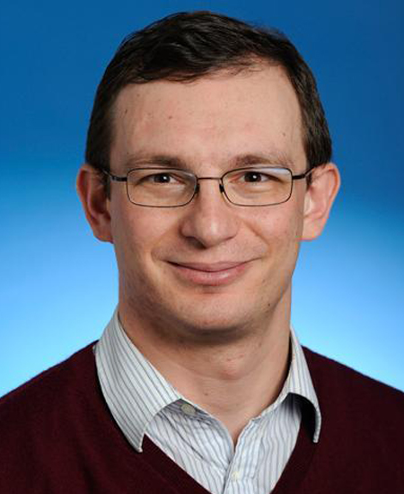
Intelligent Architectures for Intelligent Machines
Featuring Professor Onur Mutlu, Professor of Computer Science at ETH Zurich
October 19th, 2021, 12:00 PM.
Abstract
Computing is bottlenecked by data. Large amounts of data overwhelm the storage capability, communication capability, and computation capability of the modern machines we design today. As a result, many key applications’ performance, efficiency, and scalability are bottlenecked by data movement. We describe three major shortcomings of modern architectures in terms of 1) dealing with data, 2) taking advantage of the vast amounts of data, and 3) exploiting different semantic properties of application data. We argue that an intelligent architecture should be designed to handle data well. We show that handling data well requires designing system architectures based on three key principles: 1) data-centric, 2) data-driven, 3) data-aware. We give several examples of how to exploit each of these principles to design a much more efficient and high-performance computing system. We will especially discuss recent research that aims to fundamentally reduce memory latency and energy, and practically enable computation close to data, with at least two promising novel directions: 1) performing the computation in memory by exploiting the analog operational properties of memory, with low-cost changes, 2) exploiting the logic layer in 3D-stacked memory technology in various ways to accelerate important data-intensive applications. We discuss how to enable the adoption of such fundamentally more intelligent architectures, which we believe are key to efficiency, performance, and sustainability. We conclude with some guiding principles for future computing architecture and system designs.
Biography
Onur Mutlu is a Professor of Computer Science at ETH Zurich. He is also a faculty member at Carnegie Mellon University, where he previously held the Strecker Early Career Professorship. His current broader research interests are in computer architecture, systems, hardware security, and bioinformatics. A variety of techniques he, along with his group and collaborators, has invented over the years have influenced the industry and have been employed in commercial microprocessors and memory/storage systems. He obtained his Ph.D. and MS in ECE from the University of Texas at Austin and BS degrees in Computer Engineering and Psychology from the University of Michigan, Ann Arbor. He started the Computer Architecture Group at Microsoft Research (2006-2009) and held various product and research positions at Intel Corporation, Advanced Micro Devices, VMware, and Google. He received the IEEE High-Performance Computer Architecture Test of Time Award, the IEEE Computer Society Edward J. McCluskey Technical Achievement Award, ACM SIGARCH Maurice Wilkes Award, the inaugural IEEE Computer Society Young Computer Architect Award, the inaugural Intel Early Career Faculty Award, US National Science Foundation CAREER Award, Carnegie Mellon University Ladd Research Award, faculty partnership awards from various companies, and a healthy number of best paper or “Top Pick” paper recognitions at various computer systems, architecture, and security venues. He is an ACM Fellow, IEEE Fellow for, and an elected member of the Academy of Europe (Academia Europaea). His computer architecture and digital logic design course lectures and materials are freely available on YouTube (https://www.youtube.com/OnurMutluLectures), and his research group makes a wide variety of software and hardware artifacts freely available online (https://safari.ethz.ch/). For more information, please see his webpage: https://people.inf.ethz.ch/omutlu/.
-
Dr. Mihri Ozkan

Can Direct Air Capture of CO2 and Electrification of Mobility Help with the Climate Crises and Satisfy the COP26 Pledges?
Featuring Dr. Mihri Ozkan, Electrical Engineering & Climate Action Champion Professor, University of California
November 16th, 2021, 12:00 PM.
Abstract
Human influence is likely the main driver of the global warming and has increased at a rate that is unprecedented in at least the last 2000 years. The average person in the U.S. emits about 27 tons of CO2/year. With a world population of about 7.7 billion, an average carbon dioxide emission from humans alone per year is nearly 208 M tons. This does not include emissions from the industry. Human influence has changed global surface temperature more than 1.2 ˚C. While increasing living value, comfort and convenience for humans, that means more consumption of energy, decarbonization of electricity generation can help to curb carbon dioxide emissions. The use of renewable energy generation such as solar and wind may help towards this goal. However, there are sectors hard to decarbonize such as distributed emissions, transportation, air transport, process emissions from steel and cement industry, agriculture and more. In this talk, I will review: 1) electrification of mobility, and 2) direct air capture (DAC) of carbon dioxide from the atmosphere that can help with distributed and hard to avoid emissions. Unconventional solutions for low-cost and sustainable large volume manufacturing of Li-ion battery fabrication will be introduced to fulfill the future demand for the worldwide electric vehicle rush. In addition, technical, process and economic barriers for widespread deployment of DAC technology will be discussed, because energy usage and policy support are very critical factors driving DAC’s future growth. As a result of deep decarbonization of industry, transportation and the atmosphere, we may meet the Paris Agreement goals -limit global warming well below 2˚C, preferably to 1.5˚C, compared to pre-industrial levels.
Biography
Dr. Mihri Ozkan is a professor of the Electrical and Computer Engineering Department at UCR and a cooperating faculty in the Materials Science and Engineering Program and the Chemistry department. Dr. Ozkan is a Fellow of National Academy of Inventors and Frontier National Academy of Engineering, and UCR’s the first and only female engineering faculty receiving this honor. She is the Climate Action Champion and Change Maker Professor of the University of California. Dr. Ozkan completed her graduate studies at Stanford University and at UC-San Diego.
Dr. Ozkan’s research group has been developing unconventional solutions for Li-ion battery technologies using sustainable materials and green chemistry requiring low power processing. Transforming waste glass and plastic bottles, biomass (mushrooms, sugar) and natural sources such as sand and diatoms into high grade battery electrodes are among her group’s achievements. Dr. Ozkan has 29 granted and 15 active patents in the area of advanced Li-ion battery technologies for smart grid, electric vehicle and portable electronics applications. She has been selected as the most remarkable women of UCR by the UC Regents. Her creative research and innovative approaches for the advanced Li-ion battery technologies have brought her nearly 56 scientific national and international honors/awards. Dr. Ozkan has published 180 journal papers and 155 conference proceedings. Her Google scholar citations is 11094, h-Index is 55 and i10-Index is 140. She advised and graduated nearly 79 graduate students. She actively has organized symposiums and meetings at the national and international levels. Lately, she serves as the lead organizer for the Climate Change Mitigation Technologies Symposium at the Fall MRS 2021 Boston meeting. She is also the Guest Editor of the April 2022 issue of MRS Bulletin on “Materials for Carbon Capture Technologies”, and a member of the Editorial Board for the NanoEnergy Advances.
